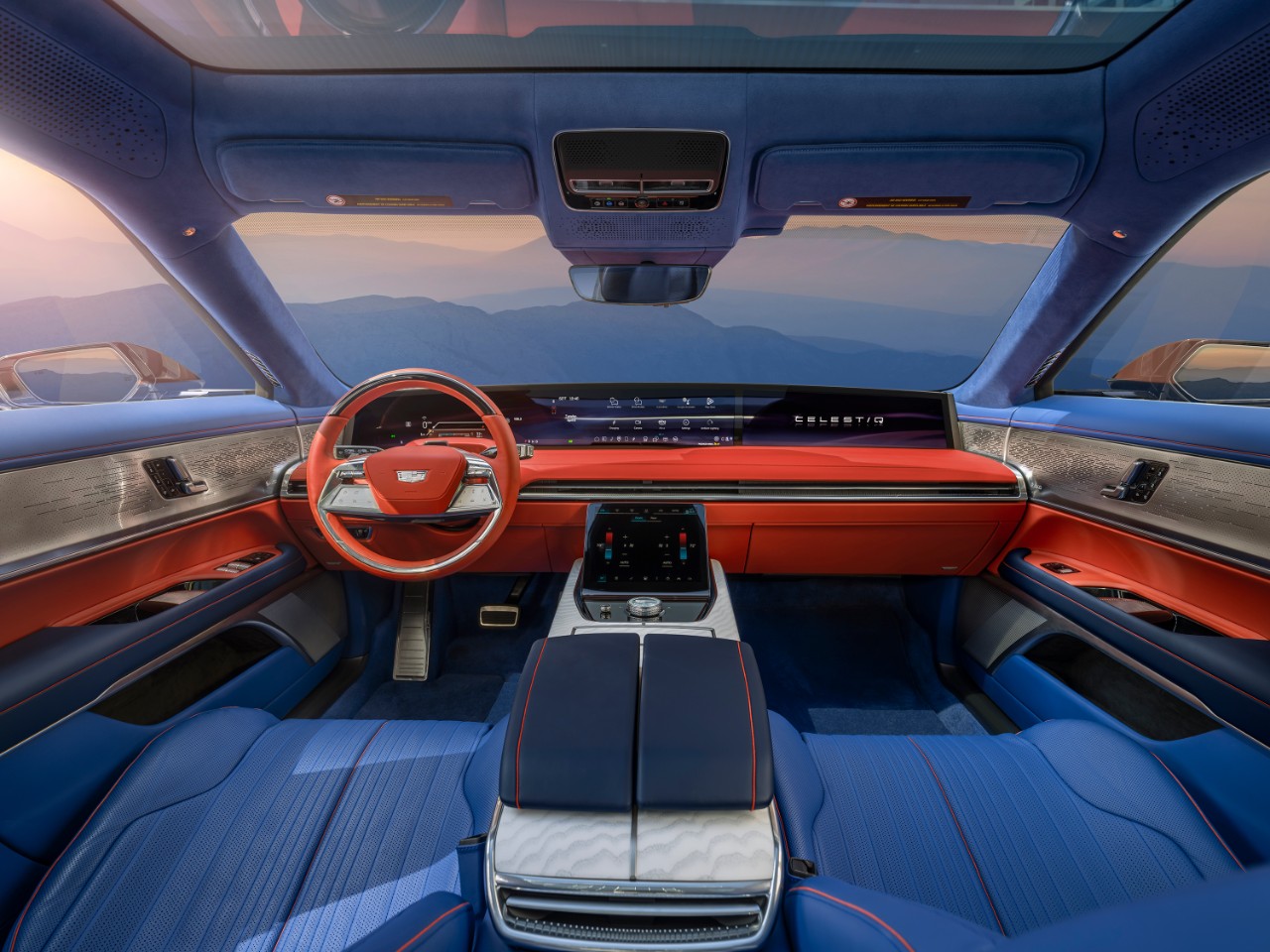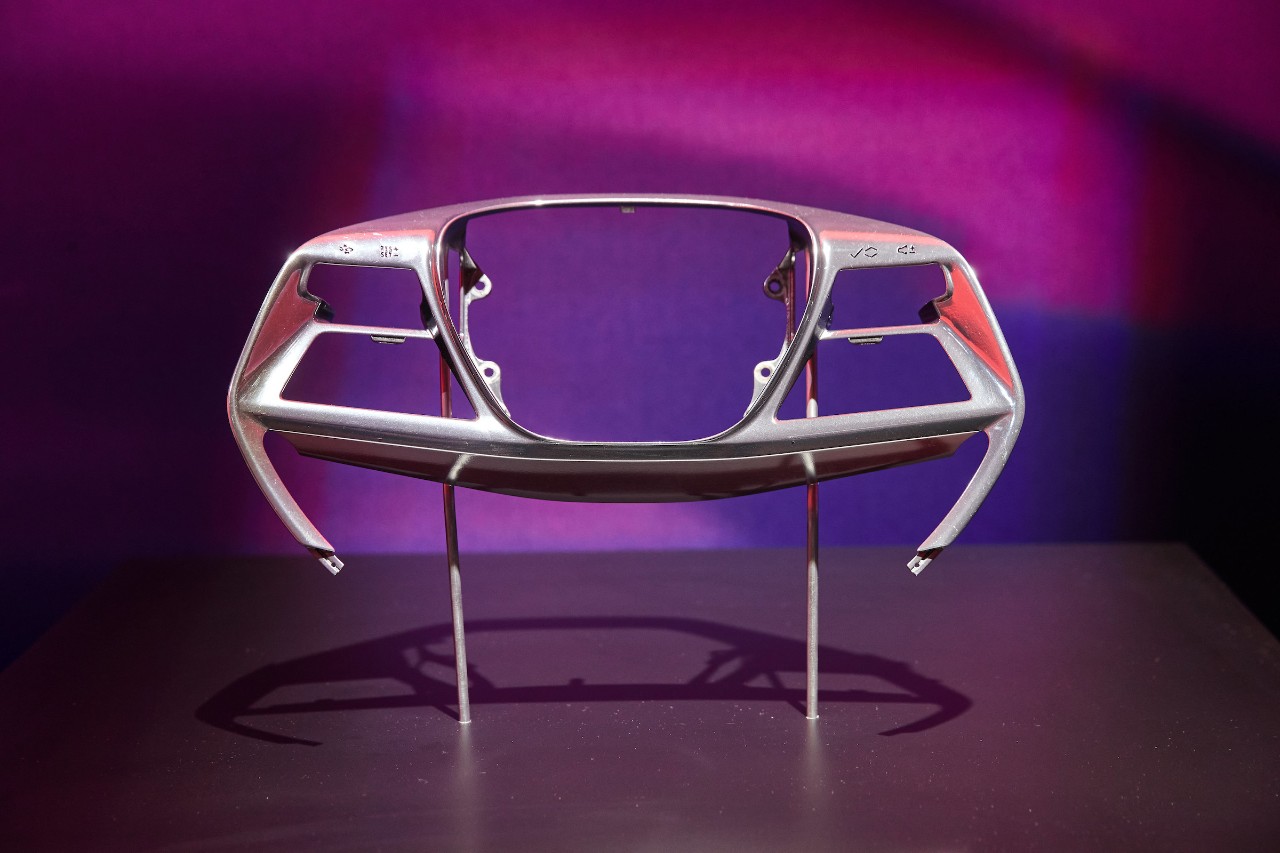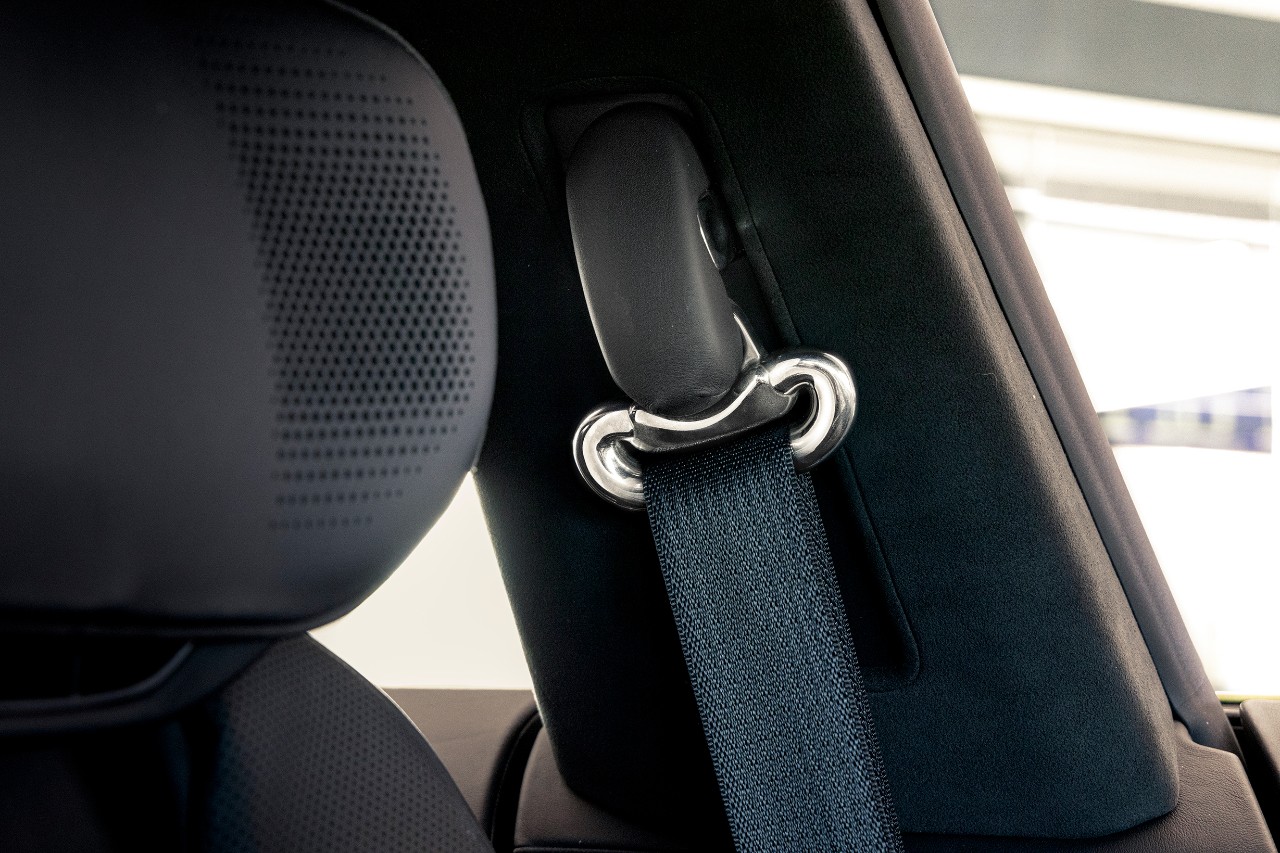By Jenn McKeogh, senior manager, GM News
For decades, General Motors has used additive manufacturing, or 3D printing, to create functional component prototypes - improving engineering agility and reducing vehicle development time.
Today, we’re pushing additive manufacturing beyond prototyping and using 3D-printed parts in low-volume production vehicles. And it starts with the vehicle that is re-establishing Cadillac as the Standard of the World – CELESTIQ.
The Cadillac CELESTIQ is an ultra-luxury, hand-built electric sedan. Additive manufacturing’s precision and flexibility made it the perfect solution to create components for the custom commissioned vehicle - the CELESTIQ has more than 130 parts produced with additive manufacturing.
The CELESTIQ steering wheel center was created through metal laser powder bed fusion technology, a type of additive manufacturing that enables LED backlighting to clearly read through the part.
The CELESTIQ steering wheel center represents GM’s largest 3D printed production metal part to date. This trim bezel component covers the front face of the steering wheel, surrounding the switches and presenting a sleek finish.
This component is also one of only a few production parts created using metal laser powder bed fusion technology. This type of additive manufacturing uses a laser to infuse layers of metal, creating durable parts with geometries that are impossible to produce through traditional manufacturing processes.
Brennon White, GM technical specialist for advanced manufacturing production applications, has been working in additive manufacturing for 14 years. He explains that the precision and flexibility of additive manufacturing made it the perfect process to create custom components for CELESTIQ.
“We wanted the part to be metal, fitting with the high-end look and feel of the vehicle,” says White. “We looked at multiple options to make this part, and additive won out because it can make a delicate, detailed, and compact part.”
The seat belt adjustable guide loop in CELESTIQ was produced with additive manufacturing, making for an intricate and durable part.
CELESTIQ also utilizes a seat belt adjustable guide loop created with additive manufacturing - our first 3D printed metal safety component. In 2024, this part was awarded the Award of Distinction in the Automotive—Electric Vehicle Category for Metal AM components by the Metal Powders Industry Federation.
“None of the finishes we could find met the high-end needs for this outstanding vehicle,” says White. “Using additive manufacturing allowed us to consolidate several parts into one continuous piece. Not only is it effortlessly beautiful, but the part is also incredibly strong.”
GM also uses 3D printed components in other production vehicles. Cadillac’s V-Series Blackwing models were the first GM production vehicles with 3D-printed parts, including a unique medallion on the manual shifter knob. Additive manufacturing is also used throughout GM motorsports vehicles, including by the Cadillac Racing team.
GM’s work on additive manufacturing is based at the Additive Industrialization Center (AIC) on our Warren, Michigan, Tech Center campus. Opened in December 2020, this 15,000 sq-ft facility is home to more than 20 machines used to print both polymer and metal materials.
Most of the 3D printed components in CELESTIQ are initially developed at AIC before engaging the supply base for production - including window switches, grab handles, console decor and structural pieces under the surface. With the highest concentration of additive manufacturing parts of any GM product, CELESTIQ is one of the most custom commissioned vehicles on the market.
“When looking at whether to use additive manufacturing, we ask ‘can it meet the functional requirements, and does it make sense economically?’ If the answer is yes to both, we know we should target AM,” says White. “That’s what we did with CELESTIQ – and additive gave us something that we never could have achieved otherwise.”
Check out this story to learn how GM is preparing master technicians for the Cadillac CELESTIQ:

For decades, General Motors has used additive manufacturing, or 3D printing, to create functional component prototypes - improving engineering agility and reducing vehicle development time.
Today, we’re pushing additive manufacturing beyond prototyping and using 3D-printed parts in low-volume production vehicles. And it starts with the vehicle that is re-establishing Cadillac as the Standard of the World – CELESTIQ.
The Cadillac CELESTIQ is an ultra-luxury, hand-built electric sedan. Additive manufacturing’s precision and flexibility made it the perfect solution to create components for the custom commissioned vehicle - the CELESTIQ has more than 130 parts produced with additive manufacturing.

The CELESTIQ steering wheel center represents GM’s largest 3D printed production metal part to date. This trim bezel component covers the front face of the steering wheel, surrounding the switches and presenting a sleek finish.
This component is also one of only a few production parts created using metal laser powder bed fusion technology. This type of additive manufacturing uses a laser to infuse layers of metal, creating durable parts with geometries that are impossible to produce through traditional manufacturing processes.
Brennon White, GM technical specialist for advanced manufacturing production applications, has been working in additive manufacturing for 14 years. He explains that the precision and flexibility of additive manufacturing made it the perfect process to create custom components for CELESTIQ.
“We wanted the part to be metal, fitting with the high-end look and feel of the vehicle,” says White. “We looked at multiple options to make this part, and additive won out because it can make a delicate, detailed, and compact part.”

CELESTIQ also utilizes a seat belt adjustable guide loop created with additive manufacturing - our first 3D printed metal safety component. In 2024, this part was awarded the Award of Distinction in the Automotive—Electric Vehicle Category for Metal AM components by the Metal Powders Industry Federation.
“None of the finishes we could find met the high-end needs for this outstanding vehicle,” says White. “Using additive manufacturing allowed us to consolidate several parts into one continuous piece. Not only is it effortlessly beautiful, but the part is also incredibly strong.”
GM also uses 3D printed components in other production vehicles. Cadillac’s V-Series Blackwing models were the first GM production vehicles with 3D-printed parts, including a unique medallion on the manual shifter knob. Additive manufacturing is also used throughout GM motorsports vehicles, including by the Cadillac Racing team.
GM’s work on additive manufacturing is based at the Additive Industrialization Center (AIC) on our Warren, Michigan, Tech Center campus. Opened in December 2020, this 15,000 sq-ft facility is home to more than 20 machines used to print both polymer and metal materials.
Most of the 3D printed components in CELESTIQ are initially developed at AIC before engaging the supply base for production - including window switches, grab handles, console decor and structural pieces under the surface. With the highest concentration of additive manufacturing parts of any GM product, CELESTIQ is one of the most custom commissioned vehicles on the market.
“When looking at whether to use additive manufacturing, we ask ‘can it meet the functional requirements, and does it make sense economically?’ If the answer is yes to both, we know we should target AM,” says White. “That’s what we did with CELESTIQ – and additive gave us something that we never could have achieved otherwise.”
Check out this story to learn how GM is preparing master technicians for the Cadillac CELESTIQ: